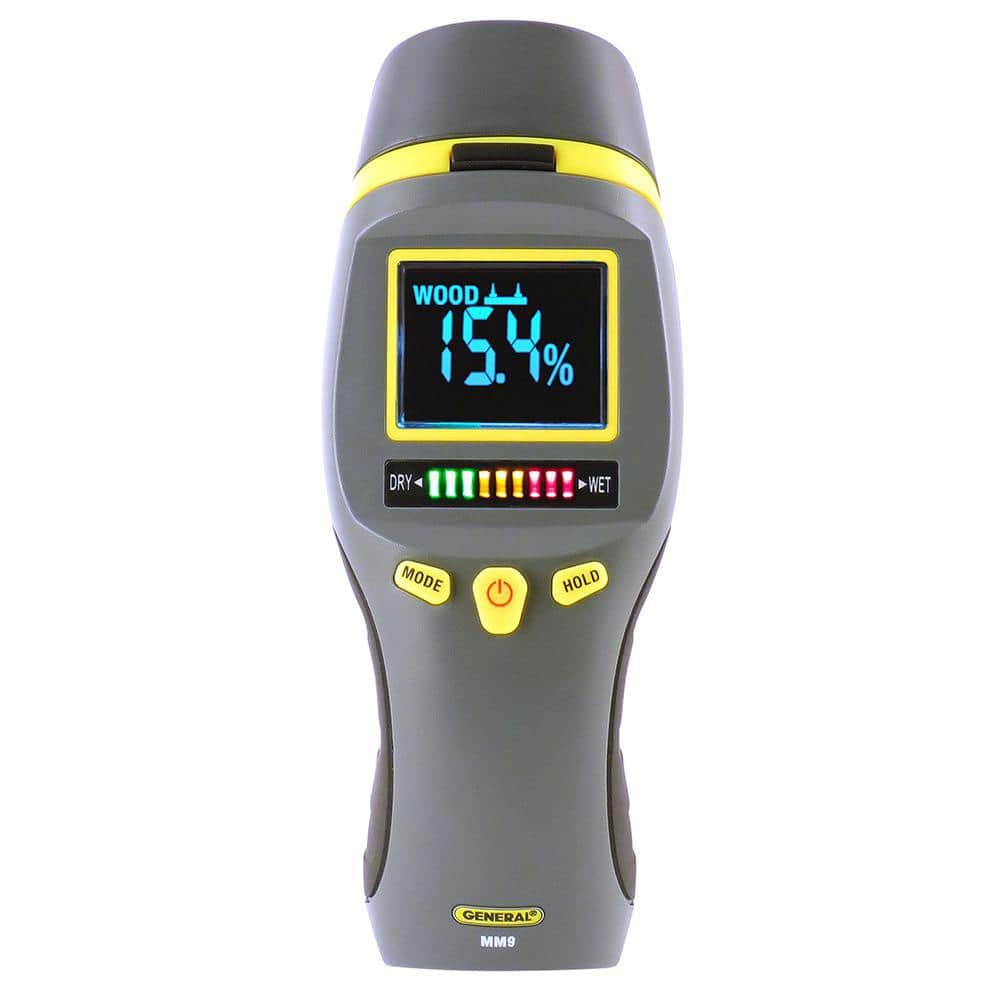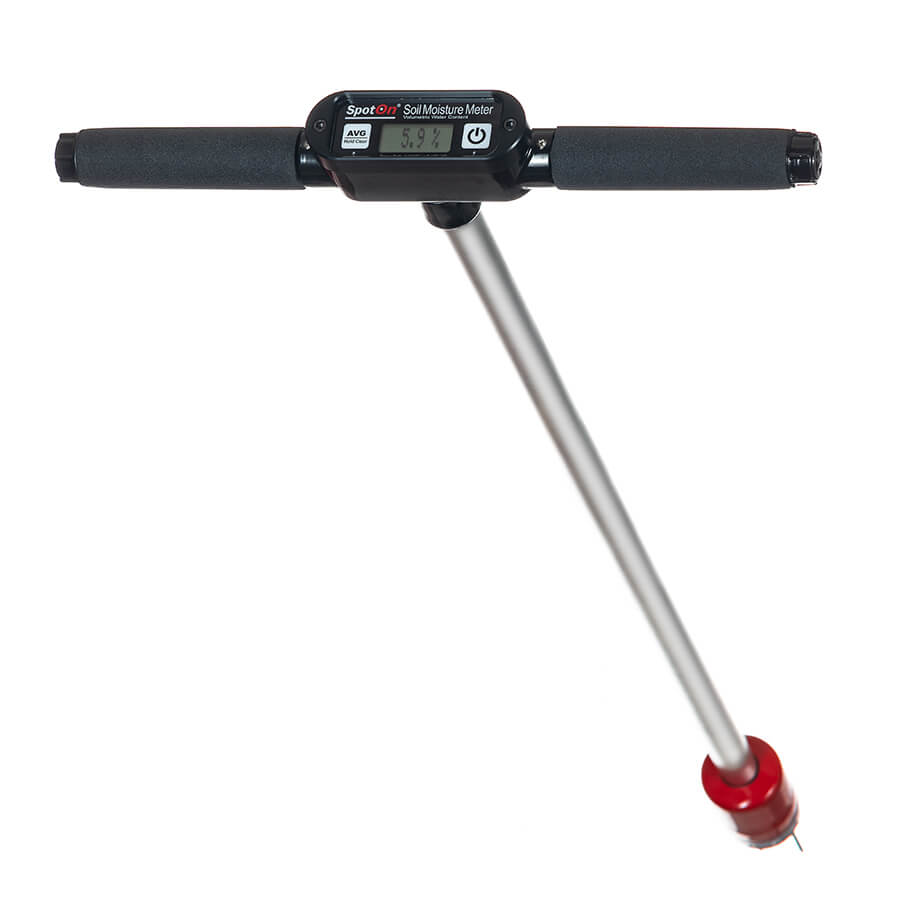Moisture Meter Reviews: Contrasting the very best Versions for Expert and DIY Usage
Moisture Meter Reviews: Contrasting the very best Versions for Expert and DIY Usage
Blog Article
Delve Into the World of Moisture Meters: Whatever You Required to Know
In the world of moisture meters lies a globe of precision and usefulness that frequently goes undetected. Understanding how moisture meters run, the various types readily available, and their diverse usages can shed light on their value in guaranteeing top quality and performance.
Exactly How Moisture Meters Job
Moisture meters operate by measuring the electric conductivity or capacitance of products to establish the moisture material present - Moisture Meter. These meters are important tools throughout different sectors, consisting of building, agriculture, and woodworking. By making use of various approaches such as pin-type or pinless modern technology, moisture meters provide precise analyses that assist specialists make informed decisions
Pin-type dampness meters function by inserting the sharp pins right into the product being tested. The electrical conductivity between the pins is after that gauged, with greater wetness levels resulting in increased conductivity. On the other hand, pinless moisture meters use electro-magnetic signals to check a larger location without creating any damage to the material's surface. These meters are suitable for swiftly analyzing dampness levels in huge locations or ended up items.
Despite the technique utilized, moisture meters play an important role in protecting against issues such as mold development, structural damages, or item flaws triggered by excess moisture. Understanding just how these meters work is essential for making sure the quality and stability of products in numerous applications.
Kinds of Moisture Meters
Given the important role wetness meters play in numerous industries, it is necessary to understand the different types offered to professionals for accurately analyzing wetness degrees. There are primarily 2 major sorts of moisture meters: pin-type and pinless wetness meters.
Pin-type dampness meters use two pins that are put right into the product being examined to determine the electric resistance in between them. This approach is frequently used for timber, drywall, and various other structure products. Pin-type meters supply accurate analyses at particular midsts, making them optimal for determining moisture slopes.
On the other hand, pinless wetness meters use electromagnetic sensor plates to scan a larger area of the product without causing any kind of damage. This kind appropriates for swiftly scanning huge areas and is frequently made use of for flooring, wall surfaces, and ceilings. Pinless meters are practical for taking readings on finished surface areas without leaving any noticeable marks.
Both kinds of moisture meters have their benefits and are selected based upon the certain needs of the task available. Recognizing the differences in between these types is vital for experts to make accurate wetness evaluations.
Applications Across Industries
With varied performances, wetness meters locate prevalent application throughout different industries, assisting specialists in guaranteeing optimum problems for products and frameworks. In the agriculture market, dampness meters are important for determining the dampness web content in grains, seeds, and hay, making sure high quality control and avoiding mold development. Building and construction professionals depend on wetness meters to analyze the dampness degrees in building materials like drywall, timber, and concrete, which is crucial for maintaining structural integrity and preventing issues like rot or mold and mildew. The other floor covering industry makes use of dampness meters to determine the dampness material in subfloors before installing various floor coverings, avoiding costly damages as a result of excess moisture. In the food industry, dampness meters are used to check and control moisture degrees in products such as grains, nuts, and dried fruits to preserve quality and quality. Additionally, moisture meters play an important function in the repair and damage control industry by assisting specialists address and recognize water damage in buildings immediately. Throughout these varied sectors, dampness meters are crucial tools for making certain the high quality, security, and long life of different products and items.
Tips for Utilizing Dampness Meters
Use the dampness meter's calibration settings to guarantee precise readings when gauging the dampness web content in various materials. In addition, make certain the meter is set to the right wetness array for the material you are measuring to obtain the most precise outcomes.

When making use of a pin-type moisture meter, put the pins to the proper depth suggested for the product being tested. This ensures that the dampness readings are taken from the right deepness within the material, giving a more precise depiction of its dampness content. For pinless dampness meters, keep in mind to keep correct call with the product's surface to obtain trustworthy analyses.

Consistently examine and replace the batteries in your dampness meter to stop imprecise analyses due to low power. Store the meter in a secure and completely dry location when not being used to extend its life expectancy and keep its accuracy. By following these pointers, you can optimize the performance of your dampness meter and get precise dampness material dimensions across different products.

Upkeep and Calibration
To make sure the accuracy of moisture content measurements, regular upkeep and calibration of the dampness meter are vital steps in its proper performance. Upkeep click to read includes maintaining the wetness meter free and clean from debris that can influence its analyses. It is very important to comply with the manufacturer's guidelines for cleaning to stop damage to the device. Furthermore, routine calibration is necessary to validate the accuracy of the analyses. Calibration readjusts the wetness meter to make sure that it supplies consistent and trusted outcomes.
Calibration should be carried out regularly, specifically if the dampness meter is made use of regularly or in crucial applications where specific dimensions are needed. By calibrating the wetness and keeping meter consistently, individuals can rely on the accuracy of the wetness content dimensions gotten.
Verdict
Finally, dampness meters Visit Website play an essential role in numerous sectors by accurately measuring the moisture content of materials. Recognizing how these tools function, the various types available, and proper maintenance and calibration are essential for getting reputable outcomes. Whether in building and construction, production, or farming, the usage of dampness meters helps make sure quality control and efficiency in processes.
Building and construction specialists rely on moisture meters to evaluate the moisture levels in building products like concrete, wood, and drywall, which is important for keeping structural stability and protecting against concerns like rot or mold. The flooring market utilizes dampness meters to measure the moisture content in subfloors prior to setting up numerous floor treatments, protecting against pricey damages due to excess wetness.Use the moisture meter's calibration settings to ensure accurate analyses when measuring the wetness content in various materials. By adhering to these ideas, you can optimize the efficiency of your wetness meter and obtain precise dampness web content dimensions across different materials.
In conclusion, moisture meters play a crucial role in different sectors by precisely measuring the dampness material of materials.
Report this page